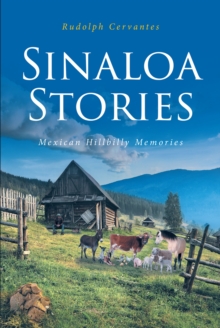Northwestern Mexico is comprised of the Baja California Peninsula, the Gulf of California (Sea of Cortez), and the states of Sonora, Sinaloa, Chihuahua, and Nayarit.
The Sierra Madre Occidental, a major mountain range system of the North American Cordillera, runs northwest-southeast through northwestern and western Mexico, and along the Gulf of California.
Summits mostly exceed elevations of six thousand feet (1,048 meters), and some peaks rise above ten thousand feet (three thousand meters).
Our story takes place at the five-thousand-foot level (1,524 meters), nestled among the vast pine and oak forest, crisscrossed as it is by creeks, brooks, streams, and ponds, with natural springs coming out of the ground everywhere not to speak of the waterfalls.With water everywhere, it was not uneasy to take a sip of the cold, pure liquid whenever one wanted.
The only places where water was not present were on the ridges, except after a major storm, where the excess water would run for a few days.
These ridges were characterized by clumps of boulders and many rocks of all sizes.
Seasonally, the Tarahumara Indians keep their goats there.
They build temporary corrals and palm roofs (small palm trees are found on the lower levels, specifically at the foot of the mountains) for the goats and take them out every day to graze.
The author does not know the rhyme or reason as to why they are seasonally kept there, but it has to be for a good reason.The Tarahumaras are the most honest, hardworking inhabitants of the mountains.
They are always busy either with their crops, chickens, turkeys, goats, horses, mules, donkeys--you name it.
They still use the bow and arrow but also have firearms.
Mexicans are everywhere and greatly outnumber the Tarahumaras (the original people of those mountains).
The Mexicans possess a diametrically opposed mindset and consider the Tarahumaras to be uncivilized.
Their perspective on reality is subjective, to say the least.Most Tarahumaras don't attend school either because the government elementary schools are too far away or because they are needed at home to help out with the many daily tasks.
The Tarahumaras eat and dress quite well (their clothes are suited for rural use).
The only criticism that could be leveled at them would be that during their free time, they are making moonshine or drinking it.They also make corn beer.
The Mexicans also moonshine and make corn beer (they were taught by the Tarahumaras).
Unlike the Tarahumaras though, the Mexicans get into scraps with each other when they are intoxicated and even gunfights.Mexican cattle (both dairy cows as well as steers) are quite abundant and are all branded.
The steers wander around where they like and are generally quite bigger than the dairy cows.
The dairy cows are kept in corrals and grass, and hay is taken to them.
They are always eating/chewing the cud.Cattle rustling among the Mexicans is not uncommon.
They are rustled to be eaten, and it is as simple as that.
Jaguars and pumas are quite common but tend to stay away from people.
They occasionally will bring down a steer then are usually hunted down.
It is always older cats who can't reach deer or wild boar any longer so they opt for comparatively slow-moving bovines.
Notwithstanding, all two-legged creatures are much more dangerous than any four-legged creature.
This story takes place within the environment just described.


